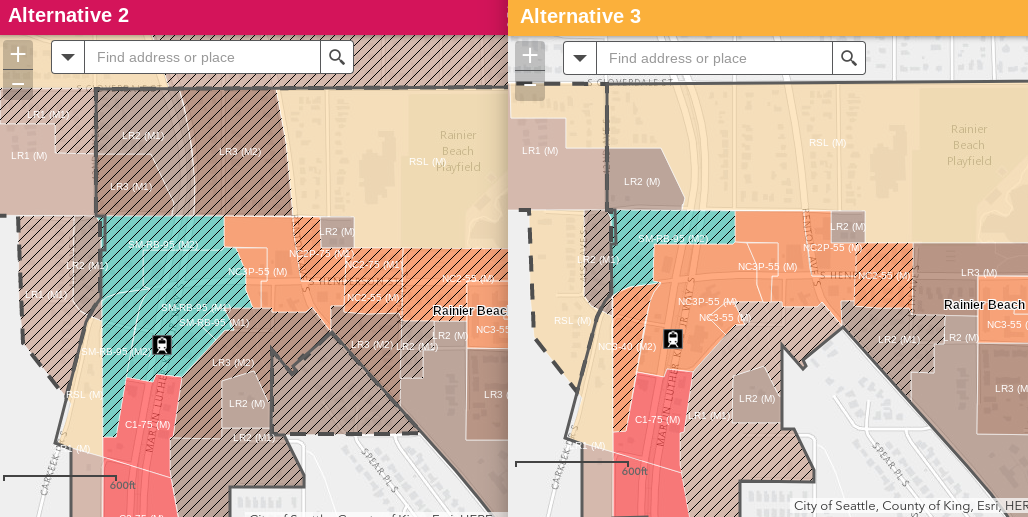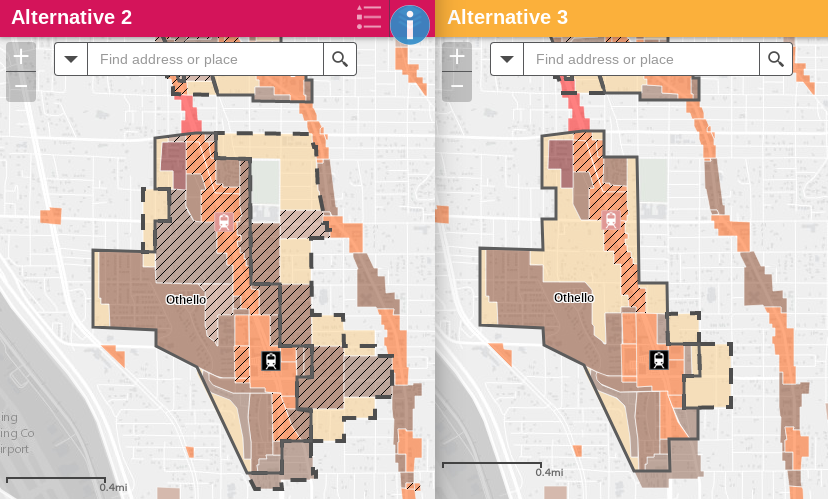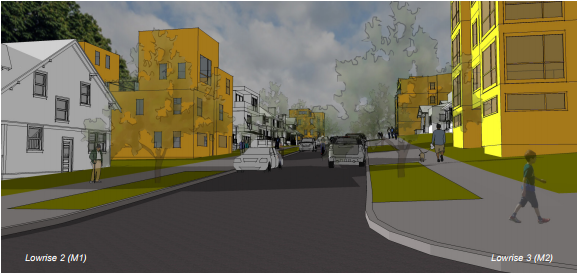Public comment closes Monday, August 7th, for the City of Seattle’s Mandatory Housing Affordability (MHA) program Draft Environmental Impact Statement (DEIS). Please submit your comments by Monday to have your voice heard. Here is the website.
The Urbanist covered the DEIS and its three studied alternatives when they were released in an overview piece and a takeaway piece. The Office of Planning and Community Development has advised that a hybrid of the alternatives is likely to be the preferred alternative. This is how I recommend mixing and matching to create the best plan:
- Alternative 2 for Northgate would provide greater zoning capacity at the County-owned parking lot where a large affordable housing complex is planned right outside Northgate station. Alternative 3 scaled down the upzones in Northgate to reduce displacement risk, but parking lots have no displacement risk.
- Alternative 2 for Capitol Hill would provide more housing capacity to help absorb the neighborhood’s incredible housing demand, which is spilling into neighboring areas like Central District. With light rail already in Capitol Hill, we need zoning that unlocks a virtuous cycle of transit-oriented development.
- Alternative 3 for Wallingford, Fremont, Ballard, and Crown Hill. The displacement analysis found low displacement risk and high opportunity in these North Seattle neighborhoods. It’s a no-brainer to funnel more growth here with M2 upzones (which come with a higher affordability requirement) and with urban village expansions.
- Alternative 3 for West Seattle Junction and Morgan Junction would better capitalize on light rail investments to West Seattle thanks to a larger urban village boundary expansion and more M1 and M2 zoning.
- Follow the Rainier Beach Neighborhood Plan, which encouraged mid-rise multifamily development near Rainier Beach Station and recommended an 85-foot height limit for commercial and mixed-use areas there–similar to Alternative 2. Alternative 3 undercuts the neighborhood plan near the station area, but may well be appropriate in other parts of the neighborhood in order to reduce displacement pressures.

- Hybrid approach in Othello? In Othello some of the most pronounced differences between Alternatives 2 and 3 emerge. The Othello urban village expansion is much bigger in Alternative 2. Moreover, Alternative 2 includes significantly more LR3 east of Othello Station whereas those areas are RSL or unchanged in Alternative 3.

Perhaps the best solution is somewhere in the middle? Expanding the urban village boundary would ensure more development within the walkshed of Othello Station contributes to affordability, but more measured changes (perhaps LR2 instead of LR3) might lessen the displacement pressure. Additionally, part of the Othello urban village expansion could be delayed until a bigger batch of urban village expansions down the road. Just when would that be? We have to fight urban villages additions and expansions onto the Comp Plan docket in 2018 and through the Comp Plan process in 2019, and from there through its own EIS. That way, there could be a whole batch of urban village expansions (here’s the ones we’ve recommended) in 2020ish. The Seattle Process at work!
Anyway, please take the time to comment on the web form this weekend to help give the City of Seattle some direction. The next round of MHA rezones could become law in early 2018 if the process goes smoothly. Let’s help it go smoothly.
Here's a walkthru of the #MHADEIS Draft Environmental Impact Statement, a necessary step to do MHA upzones citywide. https://t.co/LIRJx50ATB
— The Urbanist (@UrbanistOrg) August 4, 2017
Doug Trumm is publisher of The Urbanist. An Urbanist writer since 2015, he dreams of pedestrian streets, bus lanes, and a mass-timber building spree to end our housing crisis. He graduated from the Evans School of Public Policy and Governance at the University of Washington in 2019. He lives in Seattle's Fremont neighborhood and loves to explore the city by foot and by bike.


